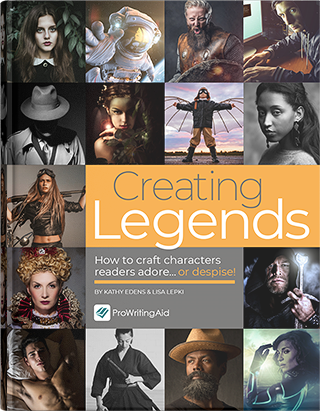
Great dialogue serves multiple purposes. It moves your plot forward. It develops your characters and it makes the story more engaging.
It’s not easy to do all these things at once, but when you master the art of writing dialogue, readers won’t be able to put your book down.
In this article, we will teach you the rules for writing dialogue and share our top dialogue tips that will make your story sing.
Dialogue Rules
Before we look at tips for writing powerful dialogue, let’s start with an overview of basic dialogue rules.
- Start a new paragraph each time there’s a new speaker. Whenever a new character begins to speak, you should give them their own paragraph. This rule makes it easier for the reader to follow the conversation.
- Keep all speech between quotation marks. Everything that a character says should go between quotation marks, including the final punctuation marks. For example, periods and commas should always come before the final quotation mark, not after.
- Don’t use end quotations for paragraphs within long speeches. If a single character speaks for such a long time that you break their speech up into multiple paragraphs, you should omit the quotation marks at the end of each paragraph until they stop talking. The final quotation mark indicates that their speech is over.
- Use single quotes when a character quotes someone else. Whenever you have a quote within a quote, you should use single quotation marks (e.g. She said, “He had me at ‘hello.’”)
- Dialogue tags are optional. A dialogue tag is anything that indicates which character is speaking and how, such as “she said,” “he whispered,” or “I shouted.” You can use dialogue tags if you want to give the reader more information about who’s speaking, but you can also choose to omit them if you want the dialogue to flow more naturally. We’ll be discussing more about this rule in our tips below.

How to Format Dialogue
Let’s walk through some examples of how to format dialogue.
The simplest formatting option is to write a line of speech without a dialogue tag. In this case, the entire line of speech goes within the quotation marks, including the period at the end.
- Example: “I think I need a nap.”
Another common formatting option is to write a single line of speech that ends with a dialogue tag.
Here, you should separate the speech from the dialogue tag with a comma, which should go inside the quotation marks.
- Example: “I think I need a nap,” Maria said.

You can also write a line of speech that starts with a dialogue tag. Again, you separate the dialogue tag with a comma, but this time, the comma goes outside the quotation marks.
- Example: Maria said, “I think I need a nap.”
As an alternative to a simple dialogue tag, you can write a line of speech accompanied by an action beat. In this case, you should use a period rather than a comma, because the action beat is a full sentence.
- Example: Maria sat down on the bed. “I think I need a nap.”
Finally, you can choose to include an action beat while the character is talking.
In this case, you would use em-dashes to separate the action from the dialogue, to indicate that the action happens without a pause in the speech.
- Example: “I think I need”—Maria sat down on the bed—“a nap.”
7 Tips for Writing Dialogue in a Story or Book
Now that we’ve covered the basics, we can move on to the more nuanced aspects of writing dialogue.
Here are our seven favorite tips for writing strong, powerful dialogue that will keep your readers engaged.
Tip #1: Create Character Voices
Dialogue is a great way to reveal your characters. What your characters say, and how they say it, can tell us so much about what kind of people they are.
Some characters are witty and gregarious. Others are timid and unobtrusive.
Speech patterns vary drastically from person to person.
To make someone stop talking to them, one character might say “I would rather not talk about this right now,” while another might say, “Shut your mouth before I shut it for you.”
When you’re writing dialogue, think about your character’s education level, personality, and interests.
- What kind of slang do they use?
- Do they prefer long or short sentences?
- Do they ask questions or make assertions?
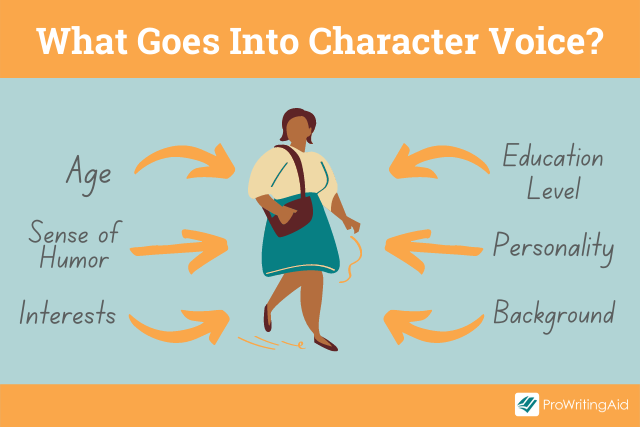
Each character should have their own voice.
Ideally, you want to write dialogue that lets your reader identify the person speaking at any point in your story just by looking at what’s between the quotation marks.
Tip #2: Write Realistic Dialogue
Good dialogue should sound natural. Listen to how people talk in real life and try to replicate it on the page when you write dialogue.
Don’t be afraid to break the rules of grammar, or to use an occasional exclamation point to punctuate dialogue.
It’s okay to use contractions, sentence fragments, and run-on sentences, even if you wouldn’t use them in other parts of the story.
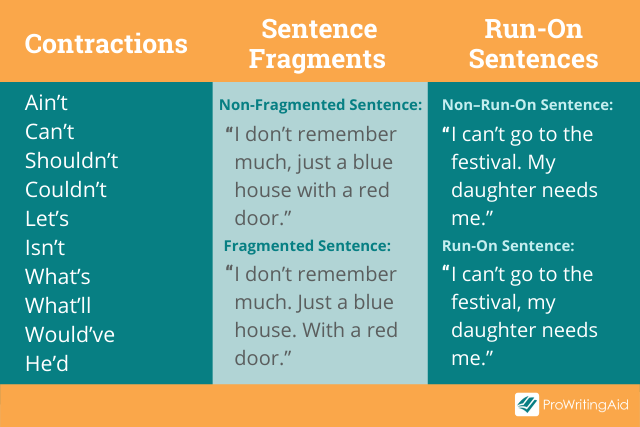
This doesn’t mean that realistic dialogue should sound exactly like the way people speak in the real world.
If you’ve ever read a court transcript, you know that real-life speech is riddled with “ums” and “ahs” and repeated words and phrases. A few paragraphs of this might put your readers to sleep.
Compelling dialogue should sound like a real conversation, while still being wittier, smoother, and better worded than real speech.
Tip #3: Simplify Your Dialogue Tags
A dialogue tag is anything that tells the reader which character is talking within that same paragraph, such as “she said” or “I asked.”
When you’re writing dialogue, remember that simple dialogue tags are the most effective.
Often, you can omit dialogue tags after the conversation has started flowing, especially if only two characters are participating.
The reader will be able to keep up with who’s speaking as long as you start a new paragraph each time the speaker changes.
When you do need to use a dialogue tag, a simple “he said” or “she said” will do the trick.
Our brains generally skip over the word “said” when we’re reading, while other dialogue tags are a distraction.
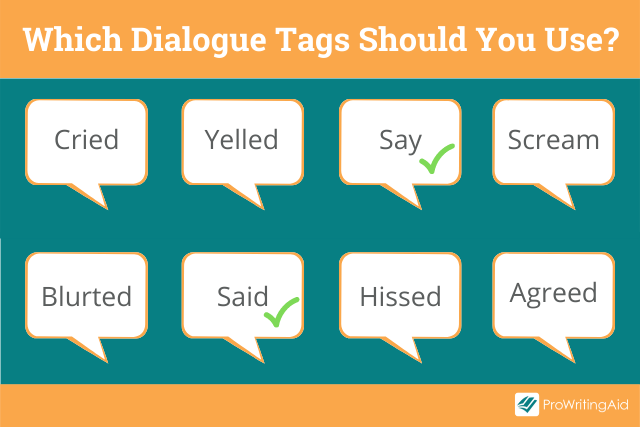
A common mistake beginner writers make is to avoid using the word “said.”
Characters in amateur novels tend to mutter, whisper, declare, or chuckle at every line of dialogue. This feels overblown and distracts from the actual story.
Another common mistake is to attach an adverb to the word “said.” Characters in amateur novels rarely just say things—they have to say things loudly, quietly, cheerfully, or angrily.
If you’re writing great dialogue, readers should be able to figure out whether your character is cheerful or angry from what’s within the quotation marks.
The only exception to this rule is if the dialogue tag contradicts the dialogue itself. For example, consider this sentence:
- “You’ve ruined my life,” she said angrily.
The word “angrily” is redundant here because the words inside the quotation marks already imply that the character is speaking angrily.
In contrast, consider this sentence:
- “You’ve ruined my life,” she said thoughtfully.
Here, the word “thoughtfully” is well-placed because it contrasts with what we might otherwise assume. It adds an additional nuance to the sentence inside the quotation marks.
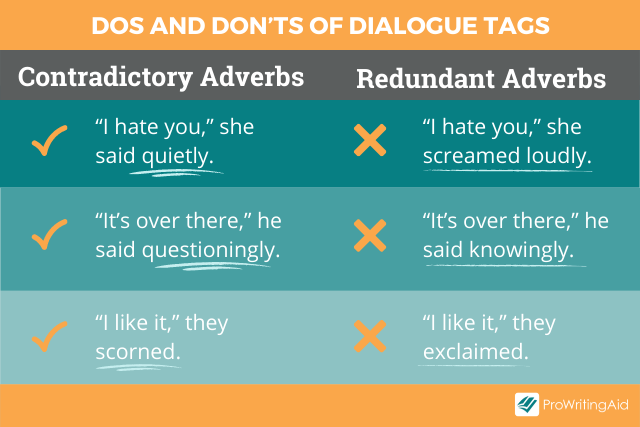
You can use the ProWritingAid dialogue check when you write dialogue to make sure your dialogue tags are pulling their weight and aren’t distracting readers from the main storyline.
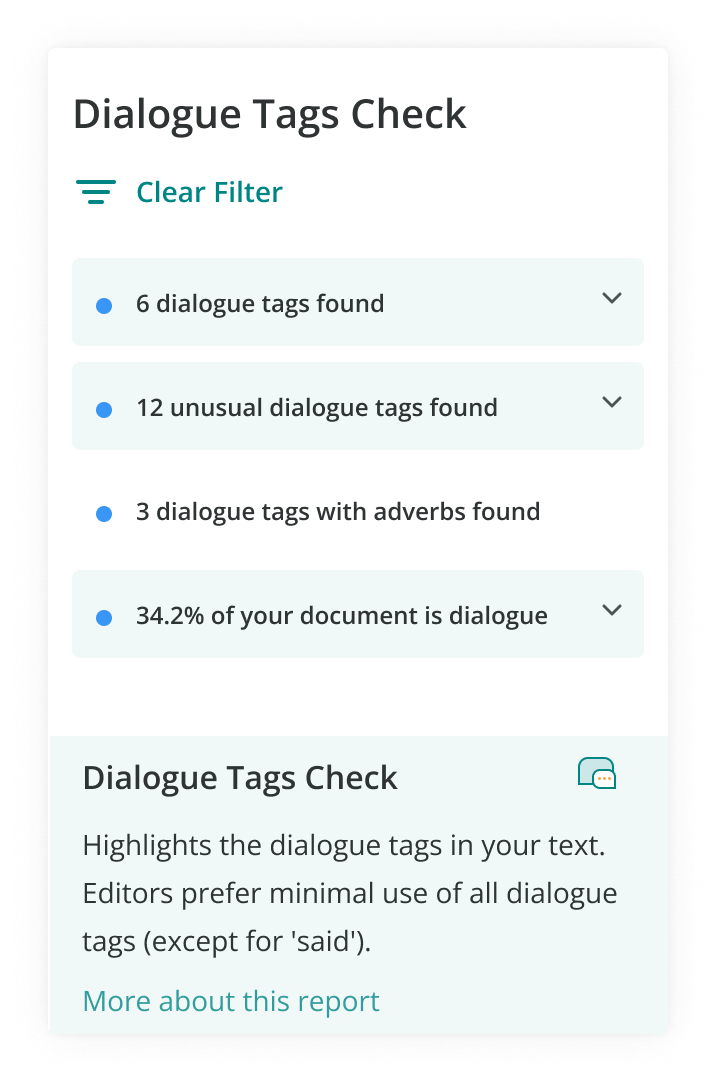
Sign up for your free ProWritingAid account to check your dialogue tags today.
Tip #4: Balance Speech with Action
When you’re writing dialogue, you can use action beats—descriptions of body language or physical action—to show what each character is doing throughout the conversation.
Learning how to write action beats is an important component of learning how to write dialogue.
Good dialogue becomes even more interesting when the characters are doing something active at the same time.
You can watch people in real life, or even characters in movies, to see what kinds of body language they have. Some pick at their fingernails. Some pace the room. Some tap their feet on the floor.
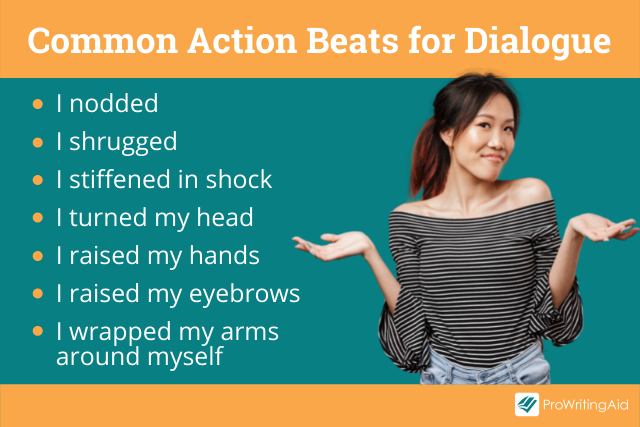
Including physical action when writing dialogue can have multiple benefits:
- It changes the pace of your dialogue and makes the rhythm more interesting
- It prevents “white room syndrome,” which is when a scene feels like it’s happening in a white room because it’s all dialogue and no description
- It shows the reader who’s speaking without using speaker tags
You can decide how often to include physical descriptions in each scene. All dialogue has an ebb and flow to it, and you can use beats to control the pace of your dialogue scenes.
If you want a lot of tension in your scene, you can use fewer action beats to let the dialogue ping-pong back and forth.
If you want a slower scene, you can write dialogue that includes long, detailed action beats to help the reader relax.
You should start a separate sentence, or even a new paragraph, for each of these longer beats.

Tip #5: Write Conversations with Subtext
Every conversation has subtext, because we rarely say exactly what we mean. The best dialogue should include both what is said and what is not said.
I once had a roommate who cared a lot about the tidiness of our apartment, but would never say it outright. We soon figured out that whenever she said something like “I might bring some friends over tonight,” what she meant was “Please wash your dishes, because there are no clean plates left for my friends to use.”
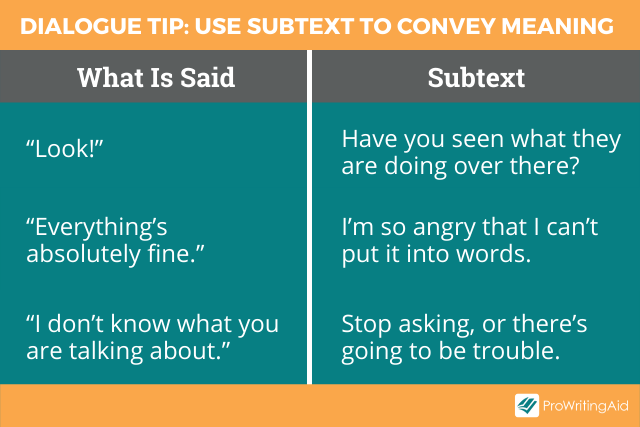
When you’re writing dialogue, it’s important to think about what’s not being said. Even pleasant conversations can hide a lot beneath the surface.
Is one character secretly mad at the other?
Is one secretly in love with the other?
Is one thinking about tomorrow’s math test and only pretending to pay attention to what the other person is saying?
Personally, I find it really hard to use subtext when I write dialogue from scratch.
In my first drafts I let my characters say what they really mean. Then, when I’m editing, I go back and figure out how to convey the same information through subtext instead.
Tip #6: Show, Don’t Tell
When I was in high school, I once wrote a story in which the protagonist’s mother tells her: “As you know, Susan, your dad left us when you were five.”
I’ve learned a lot about the writing craft since high school, but it doesn’t take a brilliant writer to figure out that this is not something any mother would say to her daughter in real life.

The reason I wrote that line of dialogue was because I wanted to tell the reader when Susan last saw her father, but I didn’t do it in a realistic way.
Don’t shoehorn information into your characters’ conversations if they’re not likely to say it to each other.
One useful trick is to have your characters get into an argument.
You can convey a lot of information about a topic through their conflicting opinions, without making it sound like either of the characters is saying things for the reader’s benefit.
Here’s one way my high school self could have conveyed the same information in a more realistic way in just a few lines:
Susan: “Why didn’t you tell me Dad was leaving? Why didn’t you let me say goodbye?”
Mom: “You were only five. I wanted to protect you.”
Tip #7: Keep Your Dialogue Concise
Dialogue tends to flow out easily when you’re drafting your story, so in the editing process, you’ll need to be ruthless. Cut anything that doesn’t move the story forward.
Try not to write dialogue that feels like small talk.
You can eliminate most hellos and goodbyes, or summarize them instead of showing them. Readers don’t want to waste their time reading dialogue that they hear every day.
In addition, try not to write dialogue with too many trigger phrases, which are questions that trigger the next line of dialogue, such as:
- “Really?”
- “And then what?”
- “What do you mean?”
It’s tempting to slip these in when you’re writing dialogue because they keep the conversation flowing. I still catch myself doing this from time to time.
Remember that you don’t need three lines of dialogue when one line could accomplish the same thing.
Dialogue Examples
Let’s look at some dialogue examples from successful novels that follow each of our seven tips.
Dialogue Example #1: How to Create Character Voice
Let’s start with an example of a character with a distinct voice from Harry Potter and the Chamber of Secrets by J.K. Rowling.
“What happened, Harry? What happened? Is he ill? But you can cure him, can’t you?” Colin had run down from his seat and was now dancing alongside them as they left the field.
Ron gave a huge heave and more slugs dribbled down his front.
“Oooh,” said Colin, fascinated and raising his camera. “Can you hold him still, Harry?”
Most readers could figure out that this was Colin Creevey speaking, even if his name hadn’t been mentioned in the passage.
This is because Colin Creevey is the only character who speaks with such extreme enthusiasm, even at a time when Ron is belching slugs.
This snippet of written dialogue does a great job of showing us Colin’s personality and how much he worships his hero Harry.
Dialogue Example #2: How to Write Realistic Dialogue
Here’s an example of how to write dialogue that feels realistic from A Thousand Splendid Suns by Khaled Hosseini.
“As much as I love this land, some days I think about leaving it,” Babi said.
“Where to?”
“Anyplace where it’s easy to forget. Pakistan first, I suppose. For a year, maybe two. Wait for our paperwork to get processed.”
“And then?”
“And then, well, it is a big world. Maybe America. Somewhere near the sea. Like California.”
Notice the punctuation and grammar that these two characters use when they speak.
There are many sentence fragments in this conversation like, “Anyplace where it’s easy to forget.” and “Somewhere near the sea.”
Babi often omits the verbs from his sentences, just like people do in real life. He speaks in short fragments instead of long, flowing paragraphs.
This dialogue shows who Babi is and feels similar to the way a real person would talk, while still remaining concise.
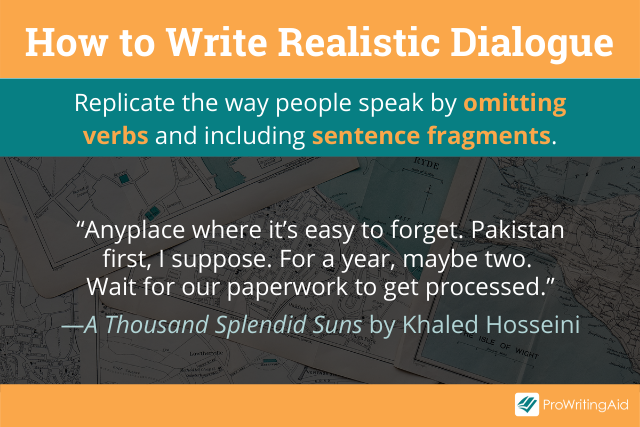
Dialogue Example #3: How to Simplify Your Dialogue Tags
Here’s an example of effective dialogue tags in Rebecca by Daphne du Maurier.
In this passage, the narrator’s been caught exploring the forbidden west wing of her new husband’s house, and she’s trying to make excuses for being there.
“I lost my way,” I said, “I was trying to find my room.”
“You have come to the opposite side of the house,” she said; “this is the west wing.”
“Yes, I know,” I said.
“Did you go into any of the rooms?” she asked me.
“No,” I said. “No, I just opened a door, I did not go in. Everything was dark, covered up in dust sheets. I’m sorry. I did not mean to disturb anything. I expect you like to keep all this shut up.”
“If you wish to open up the rooms I will have it done,” she said; “you have only to tell me. The rooms are all furnished, and can be used.”
“Oh, no,” I said. “No. I did not mean you to think that.”
In this passage, the only dialogue tags Du Maurier uses are “I said,” “she said,” and “she asked.”
Even so, you can feel the narrator’s dread and nervousness. Her emotions are conveyed through what she actually says, rather than through the dialogue tags.
This is a splendid example of evocative speech that doesn’t need fancy dialogue tags to make it come to life.
Dialogue Example #4: How to Balance Speech with Action
Let’s look at a passage from The Princess Bride by William Goldman, where dialogue is melded with physical action.
With a smile the hunchback pushed the knife harder against Buttercup’s throat. It was about to bring blood. “If you wish her dead, by all means keep moving," Vizzini said.
The man in black froze.
“Better,” Vizzini nodded.
No sound now beneath the moonlight.
“I understand completely what you are trying to do,” the Sicilian said finally, “and I want it quite clear that I resent your behavior. You are trying to kidnap what I have rightfully stolen, and I think it quite ungentlemanly.”
“Let me explain,” the man in black began, starting to edge forward.
“You’re killing her!” the Sicilian screamed, shoving harder with the knife. A drop of blood appeared now at Buttercup’s throat, red against white.
In this passage, William Goldman brings our attention seamlessly from the action to the dialogue and back again.
This makes the scene twice as interesting, because we’re paying attention not just to what Vizzini and the man in black are saying, but also to what they’re doing.
This is a great way to keep tension high and move the plot forward.
Dialogue Example #5: How to Write Conversations with Subtext
This example from Ender’s Game by Orson Scott Card shows how to write dialogue with subtext.
Here is the scene when Ender and his sister Valentine are reunited for the first time, after Ender’s spent most of his childhood away from home training to be a soldier.
Ender didn’t wave when she walked down the hill toward him, didn’t smile when she stepped onto the floating boat slip. But she knew that he was glad to see her, knew it because of the way his eyes never left her face.
“You’re bigger than I remembered,” she said stupidly.
“You too,” he said. “I also remembered that you were beautiful.”
“Memory does play tricks on us.”
“No. Your face is the same, but I don’t remember what beautiful means anymore. Come on. Let’s go out into the lake.”
In this scene, we can tell that Valentine missed her brother terribly, and that Ender went through a lot of trauma at Battle School, without either of them saying it outright.
The conversation could have started with Valentine saying “I missed you,” but instead, she goes for a subtler opening: “You’re bigger than I remembered.”
Similarly, Ender could say “You have no idea what I’ve been through,” but instead he says, “I don’t remember what beautiful means anymore.”
We can deduce what each of these characters is thinking and feeling from what they say and from what they leave unsaid.
Dialogue Example #6: How to Show, Not Tell
Let’s look at an example from The Name of the Wind by Patrick Rothfuss. This scene is the story’s first introduction of the ancient creatures called the Chandrian.
“I didn’t know the Chandrian were demons,” the boy said. “I’d heard—”
“They ain’t demons,” Jake said firmly. “They were the first six people to refuse Tehlu’s choice of the path, and he cursed them to wander the corners—”
“Are you telling this story, Jacob Walker?” Cob said sharply. “Cause if you are, I’ll just let you get on with it.”
The two men glared at each other for a long moment. Eventually Jake looked away, muttering something that could, conceivably, have been an apology.
Cob turned back to the boy. “That’s the mystery of the Chandrian,” he explained. “Where do they come from? Where do they go after they’ve done their bloody deeds? Are they men who sold their souls? Demons? Spirits? No one knows.” Cob shot Jake a profoundly disdainful look. “Though every half-wit claims he knows...”
The three characters taking part in this conversation all know what the Chandrian are.
Imagine if Cob had said “As we all know, the Chandrian are mysterious demon-spirits.” We would feel like he was talking to us, not to the two other characters.
Instead, Rothfuss has all three characters try to explain their own understanding of what the Chandrian are, and then shoot each other’s explanations down.
When Cob reprimands Jake for interrupting him and then calls him a half-wit for claiming to know what he’s talking about, it feels like a realistic interaction.
This is a clever way for Rothfuss to introduce the Chandrian in a believable way.
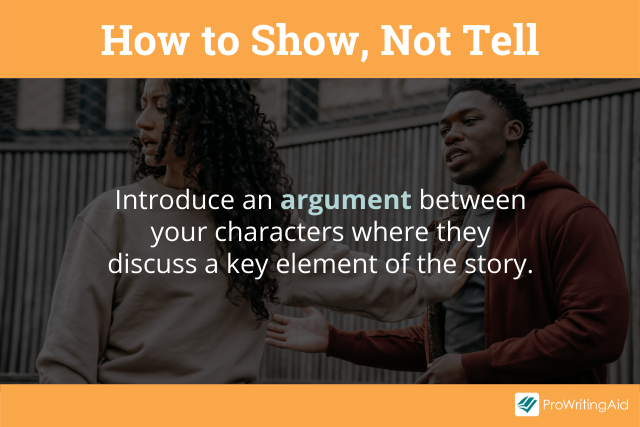
Dialogue Example #7: How to Keep Your Dialogue Concise
Here’s an example of concise dialogue from The Catcher in the Rye by J.D. Salinger.
“Do you blame me for flunking you, boy?” he said.
“No, sir! I certainly don’t,” I said. I wished to hell he’d stop calling me “boy” all the time.
He tried chucking my exam paper on the bed when he was through with it. Only, he missed again, naturally. I had to get up again and pick it up and put it on top of the Atlantic Monthly. It’s boring to do that every two minutes.
“What would you have done in my place?” he said. “Tell the truth, boy.”
Well, you could see he really felt pretty lousy about flunking me. So I shot the bull for a while. I told him I was a real moron, and all that stuff. I told him how I would’ve done exactly the same thing if I’d been in his place, and how most people didn’t appreciate how tough it is being a teacher. That kind of stuff. The old bull.
Here, the last paragraph diverges from the prior ones. After the teacher says “Tell the truth, boy,” the rest of the conversation is summarized, rather than shown.
The summary of what the narrator says in the last paragraph—“I told him I was a real moron, and all that stuff”—serves to hammer home that this is the type of “old bull” that the narrator has fed to his teachers over and over before.
It doesn’t need to be shown because it’s not important to the narrator—it’s just “all that stuff.”
Salinger could have written out the entire conversation in dialogue, but instead he kept the dialogue concise.
Final Words
Now you know how to write clear, effective dialogue! Start with the basic rules for dialogue and try implementing the more advanced tips as you go.
What are your favorite dialogue tips? Let us know in the comments below.

